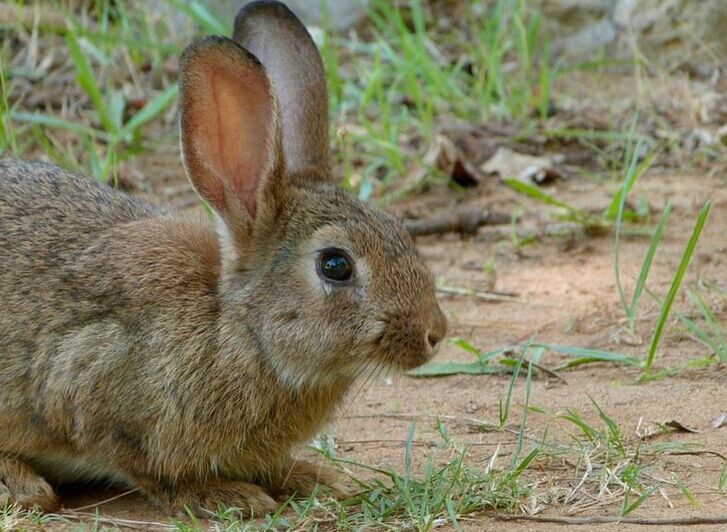(单词翻译:单击)
听力文本
This is Scientific American — 60-Second Science. I'm Cynthia Graber.
As humans developed civilizations in Eurasia and Northern Africa, they also domesticated animals for food and labor: horses, cows, goats, pigs, sheep and a few others. But no evidence existed for the deliberate cultivation and breeding of animals in North or Central America—until now.
"So at this ancient city of Teotihuacan in particular, which is really one of the earliest urban cities in North America..."
Andrew Somerville of the University of California San Diego, talking about the metropolis that once existed some 30 miles northeast of present-day Mexico City.
"...previous excavations have found a lot of rabbits. But at one compound in particular they found more evidence that they were interacting with rabbits more intensively. There was a statue of a rabbit. There was evidence that maybe they were butchering them. And this compound, which is called Oztoyahualco, actually had almost twice as many rabbit bones relative to the other complexes at the city. So it did seem like something was different with this particular compound."
Somerville and colleagues tested 134 rabbit bones at the 2,000-year-old site, as well as 13 contemporary samples. If the ancient rabbits fed on wild vegetation, the carbon isotopes in the bones would show evidence of what's known as the C3 photosynthetic pathway. But the domesticated crops of that time, such as corn and cactus fruit, employ what's called the C4 pathway—which leaves a different carbon isotope ratio in the bones.

"Fortunately we were able to actually show that rabbits from this compound did actually have higher carbon values, significantly higher carbon values. Which means that they did have significantly different diets from other rabbits within the city, and also significantly different diets than wild rabbits from around the region. Which is pretty strong evidence we say to show that they were actually being provisioned by humans, fed by humans, managed by humans."
The research is in the journal PLoS ONE.
It's true that the carbon evidence could also be the result of the rabbits being trapped in corn fields, where they were scavenging. But the presence of the dedicated pen and the statue of a rabbit led the scientists to conclude that the animals were in fact being raised—which changes our understanding of New World cities.
"That is one of these assumptions about the new world—that they just didn't have as intensive relationships with animals. That husbandry, especially with mammals, wasn't as important of a factor in their organization and supporting these big cities. So what we're showing is that maybe they were just as intensive in some respects as these old world cities but they're just less archaeologically visible. A rabbit leaves a much smaller footprint than a cow or a horse does."
Thanks for listening for Scientific American — 60-Second Science Science. I'm Cynthia Graber.
参考译文
这里是科学美国人——60秒科学。我是辛西娅·格雷伯。
人类在欧亚大陆和北非大陆繁衍了文明,同时也驯养了可以作为食物和劳动工具的动物,如马、牛、山羊、猪、绵羊等。但是直到现在仍没有证据表明人类在美洲北部和中部刻意培养和繁殖动物。
“所以,特别是古城特奥蒂瓦坎,这是北美最早的城市之一……”
加州大学圣地亚哥分校的安德鲁·索默维尔认为大都市曾经出现在现在的墨西哥城东北约30英里的地方。
“此前的挖掘工作发现了大量的兔子。特别是在其中一个建筑群,他们发现了人类和兔子互动频繁的更多证据。那里有一个兔子的雕像。有证明表明那里的人曾屠杀兔子。这个地方名为欧兹托雅胡科,研究发现这里兔子骨头的数量是该市其他建筑群的两倍。所以这个建筑群确实与众不同。”
索默维尔和同事对这个已有2000年历史的地方出土的134块兔子骨头和13块现代兔子骨头样本进行了检测。如果古代兔子食用的是野生植被,那它们骨头中的碳元素将会显示出C3 光合途径。而玉米和仙人果等当时家养的作物,采用的是C4 光合途径,这就会在兔子骨头中留下不同的碳同位素比率。
“幸运的是,我们已经可以证实在这个建筑群发现的兔子确实含有更高的碳值,而且是显著升高的碳值。这表明它们与城市其它地区的兔子吃的东西明显不同,而且和这个地区周围的野生兔子吃的食物也完全不同。我们可以说这是非常强有力的证据,可以证明这些兔子是由人类喂养、饲养和管理的。”
该研究结果已发表在《公共科学图书馆·综合》期刊上。
不过,碳元素也有可能是因为兔子被困在玉米地里,在那里觅食的结果。但是,专用围栏和兔子雕像使科学家们断定,这些动物实际上是由人类饲养的,这改变了我们对新大陆上的城市的理解。
“这是关于新大陆的其中一个假设——他们与动物的关系没有那么密切。畜牧业,尤其是和哺乳动物的联系,并不是当时结构中的重要因素,也不是支撑这些大型城市的重要因素。所以我们发现的可能只是他们在某些方面同这些古老世界城市的紧密联系,但是在考古学上的证据却不是那么明显。毕竟一只兔子比一头奶牛或一匹马留下的足迹要小得多。”
谢谢大家收听科学美国人——60秒科学。我是辛西娅·格雷伯。
译文为可可英语翻译,未经授权请勿转载!
重点讲解
重点讲解:
1. in particular 尤其;特别;
例句:He studies in particular the fishes of the Indian Ocean.
他专门研究印度洋的鱼类。
2. as well as 除…之外;也;还;
例句:He can shoot as well as riding horse.
他不但能骑马,而且能射击。
3. be known as 认为…是;把…看作是;
例句:The policeman was known as a drug buster.
这位警察被称作毒贩克星。
4. in fact (用于修正、引出相反意见或对比等)事实上,其实;
例句:In fact we were innocent of the crime.
事实上,我们是无辜的。


